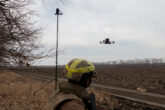December 18, 2017
Trump’s New National-Security Strategy Projects Confidence
President Trump today unveiled his new National Security Strategy (NSS), exceeding the expectations of the national-security community by producing a remarkably coherent NSS within his first twelve months in office. President Obama took 16 months to present his vision, and President George W. Bush, dealing with the disturbance of 9/11 to his strategic considerations, took 20 months. Clearly guided by the vision enunciated by the president during his 2016 campaign and validated by that national election, the team of Lieutenant General H. R. McMaster, Dina Powell, and Nadia Schadlow has crafted a “sustainment” strategy supported by a peace-through-strength defense buildup. What is very clear is that this strategy is not a break from the nation’s post–World War II–era national-security policy but rather a realistic distillation of that policy tailored to the challenges the nation faces today.
However, in a break from his post–Cold War predecessors, President Trump readily announces that the United States is presently in a great-power competition and names the nation’s prime competitors as Russia and China. While appeals to American values remain, and in fact are strongly stated, it is the promotion of American interests that emerges most starkly. The president states that he plans to compete aggressively in the economic sphere by pursuing free, fair, and reciprocal trade on a bilateral basis while also confronting nations that violate the free-trade agreements signed in the past. Additionally, the new NSS breaks from the language of the Obama administration by overtly promoting American exceptionalism and presenting the United States as a force for good in the world. As such, the new NSS emerges as a true amalgam of Theodore Roosevelt’s warrior approach to the world and Woodrow Wilson’s attempt to be its priest.
Read the full op-ed in National Review.
More from CNAS
-
Defense / Transatlantic Security
When Defense Becomes Destruction: Austria-Hungary’s Mistake and Ukraine’s RiskThis article was originally posted on War on the Rocks. The southeastern Polish city of Przemyśl, with its elegant 19th century Habsburg-era train station, remains one of the ...
By Franz-Stefan Gady
-
Defense / Transatlantic Security
Ukraine’s Catch-22 MomentThis article was originally published in the Financial Times. In Joseph Heller’s wartime classic, Catch-22, the protagonist Yossarian seeks out the US army surgeon Doc Daneeka...
By Franz-Stefan Gady
-
CNAS Insights | Budgetary Own Goals Undermine “Speed and Volume”
On November 7, Secretary of Defense Pete Hegseth laid out a plan to overhaul the Department of Defense’s (DOD’s) acquisition system. Placing an emphasis on delivering new capa...
By Philip Sheers, Carlton Haelig & Stacie Pettyjohn
-
Drones: Who Is Making the New Weapons of War?
From Ukraine and Russia to Gaza and Sudan, drones have become a key weapon of war. Which companies are making them, and profiting from this rapidly expanding but controversial...
By Stacie Pettyjohn




